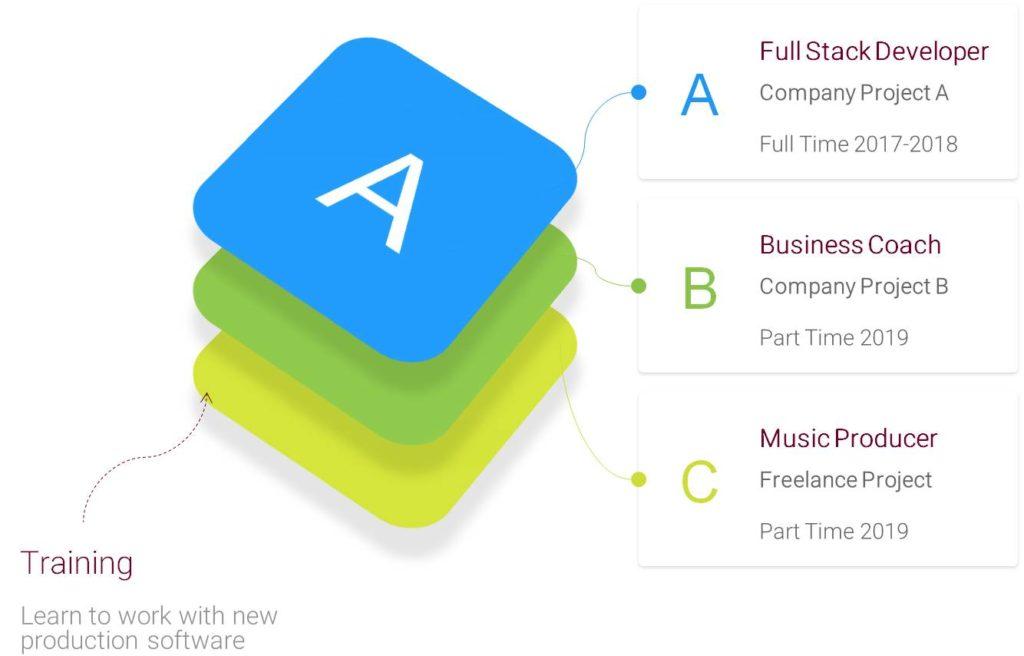Do you want to work for one employer for your entire life? That is something nearly nobody can imagine today. Solely doing what was written down in a job description and employment contract is also rejected by the majority of my generation: Generation Y a.k.a. Millenials. We have a different attitude than the generation of our parents. Not only do we want to put an effort in our work, we want companies to recognize and groom our potential! Read along to see how companies can benefit from the engagement and creativity of this misunderstood generation. Learn what we Millenials believe in, how we perceive work and why a knowledge-building, project-oriented environment can be used to attract this hungry generation.
Millenials’ Perception of Work
My Generation does not only want to see the bigger picture, we want to think and work outside the box: Our thirst for knowledge is driving constant learning and personal improvement. From the first day at work, we soak up information and capabilities until we master the defined scope of duties. But at this point, in case it is identifiable as such, nobody says STOP. We will already be on our way to the next finding, the next goal, the next level. We constantly combine existing knowledge with recently gained abilities and use them in new assignments. Subliminally, we already prepare for the next challenge. We take up responsibility in our private and professional life. A lot of us like to explore the unknown because of curiosity, motivation, or convictions.

There are many roads to individual success. Image Source
Needless to say, all of us have somewhat individual expectations towards life and work. But none of us initially possess all required skills or experiences to reach our goals right away. That is the reason why Millenials do not live and learn alone. History taught us that human beings always pushed technological and social barriers together: from building wheels, pyramids or rockets, to enforcing human rights and equality. These innovations need time as well as trial-and-error processes. Drawbacks are natural, but we can achieve anything if we try hard enough and collaborate with others who complement our skills and share our inspirations.
For that reason a majority of Millennials expresses a desire to lead, believing leadership is the empowerment of others. But with countless career possibilities out there in the world, it also becomes increasingly difficult for young professionals to find out where their own capabilities might add the most value; for them and their employer.
When searching for answers about how to fulfill their own potential, some Millenials get confused or frustrated due to a lack of transparency regarding their own possibilities. Here, our Generation needs the help of leaders, educational institutions and organizations who seek to identify, develop and apply our talents.
Millenials’ most valuable Asset: Knowledge
It is a major task for companies to create an environment that aligns the goals of its employees with the goals of the business. How do employee qualifications find the way to matching work assignments? Sure, job descriptions and recruitment processes are an important filter. Ideally, the outcome is a well-suited hire. But what happens after an employee completed onboarding and the excitement of the first 90 days decreases?
With this question, a lot of us remember the sad stories of older relatives and friends who worked in the same positions and surroundings for decades. They complained about deep-rooted routines, personal gridlock and passion-less colleagues. This daily rigidity does not comply with the dynamics and progress that we strive for within our emerging knowledge society.
Luckily, the world of work is transforming: standardized processes undergo automation efforts. Machines overtake repeating physical tasks. The most valuable asset of millenials is their knowledge and the way they apply it. Today, the majority of assignments is related to information, accessible and usable anywhere and anytime. Knowledge work can be apprehended, planned, enhanced and analyzed in a very fast and easy way. Communication technology and algorithms are our daily assistants to share and facilitate information world wide.
The Life of Millenials: A Portfolio of Projects
Millenials, people of my generation, are able to apply different layers of competencies in various scenarios. Due to the brief shelf-life of knowledge in our fast-moving world, we undergo a constant learning process. Improving certain skill patterns enables us to succeed in various tasks. Static jobs and repetitive tasks therefore loose prestige, because it becomes more attractive to take other roles in more changing, challenging environments. With no further ado, we could be parents, volunteers, remote freelance workers and employees. Some call this portfolio careers, others relate to the gig-economy.

An individual can apply and train different skill sets “A”, “B” and “C” in different roles
However you want to call it, this change in mindset has arrived at executives’ levels. Instead of keeping their employees in a fixed area of work, an increasing number of companies applies the diverse skill sets of their employees in projects. In this environment, people are enabled to engage in changing roles and responsibilities. Consequently, employees combine their expertise and apply skills where needed: during short or long-term projects, forming cross-functional teams from members of different departments.
Leveraging potential, identifying new possibilities, exchanging ideas and fostering innovation is a daily routine in so called network organizations. For the interested reader, there are different examples of successful businesses and their transformation available: from SMEs to international players such as Decathlon. (I highly recommend you to watch this YouTube Video: Network Organisation in Decathlon).
How to attract Millennials: Adopt their Mindset

You can manage Project environments seamlessly with the help of modern cloud services. Source
Of course, project environments and network organizations need careful management. You want to keep up transparency and productivity while everything is in constant motion. You want to assign tasks quickly, track progress and outcome. Fortunately, modern technological solutions enable companies to organize project teams in real time. Thorough decisions to plan ahead or quick re-arrangements can be made with the help of intelligent data analytics: Software such as iCombine makes competencies visible for the whole organization and allows to quickly build qualified teams. Collaborative task management and communication tools such as Asana or Slack ensure smooth information flows and involvement while projects are executed.
There might be no standardized blueprint for transformation to network organizations or swarm organizations. Each company must find its own approach, inspired by its history, business and the dynamics of the market. But you can start attracting more talent today by adapting a project-focused mindset, listening to Millenials in your organization and promoting managers from Gen Y. Their understanding of modern information technology and their coaching-driven approach to leadership can build a productive foundation. They know how to approach, motivate and empower talent of their age and create an environment of continuous learning. Your reputation as an inviting place to work and your retention rate will advance significantly if you empathize the mindset I described in this article and engage yourself in constant exchange with the people you aim to work with.
How to Manage Project Structures
As a manager of a project-oriented organization, you need to find a balance between client requests, employee needs and business goals. This can be a huge challenge. At iCombine, we invented a solution for those dynamic environments. Our solution helps you to uncover the skills and potentials of your workforce in a highly structured way. With the help our technology, you will be able to identify matching experts who have the desired skills and time for upcoming project roles. Within our tool, you can invite these experts and ask for their interest in different internal opportunities. Thus, you create a transparency that potentially goes far beyond the project staffing process: iCombine also allows you to detect training interests, initiate skill development programs, and connect your colleagues for knowledge exchange. It has never been easier to plan your workforce and assignments in one place! We are happy to showcase all the possibilities of iCombine in a personal demo. If you want to try it out yourself or with up to 49 colleagues, then check out the free trial version here.
Written by Richard Schentke, Co-founder & CEO of iCombine


